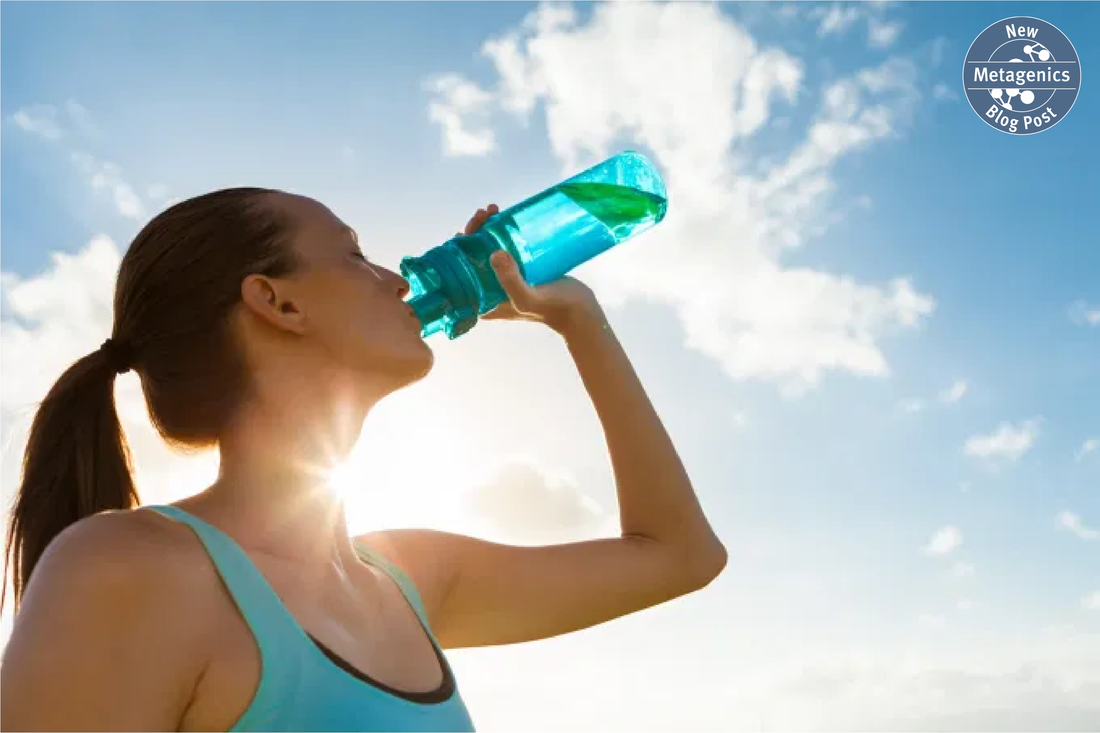|
We all know that hydration is important, especially as the weather warms up and we spend more time outside. But when it comes to getting our eight glasses of water a day, there are numerous options, with some claiming to be better than others. But is there any real difference? We took a look at 10 different kinds to see which hold water. 1. Tap The water that comes out of your kitchen faucet (and bathroom faucets, toilets, garden hose, washing machine, etc.) comes from the local water supply and can be potable. However, when it comes to drinking water, a growing number of people choose alternative sources based on fear of what’s in the local water supply or their own research.1,2 The Environmental Working Group analyzes state water tests and provides reports on local water supply based on ZIP code. However, it’s worth noting that legal limits for water contaminants can be 20 years old and do not necessarily indicate safety.3 Tap water can contain bacteria, pesticides, unhealthy levels of minerals, lead, and other contaminants, including glyphosate.1-4 Many people who don’t want the added plastic waste (as well as the convenience) choose to invest in filtrations systems. These can range from simple and inexpensive activated charcoal water filters, like Brita® filters, to more expensive reverse osmosis filtration systems. 2. Purified Purified water takes ground water or the water that comes from your tap and treats it to remove the impurities such as chemicals, bacteria, and other contaminants. There are several ways this is done, including reverse osmosis (see #3 below) and through ion exchange.5 In order to be designated as purified, the treated water must follow EPA regulations for drinking water, meaning that it may have no more than 10 ppm of solids like calcium, sulfate, heavy metals, ammonia, and other substances, and its pH must be in the range of 5–7.5 The downside to purified water is that along with the removal of harmful substances, minerals such as fluoride, which is commonly added to tap water, is removed as well. 3. Reverse osmosis Reverse osmosis uses ultrathin membranes to filter impurities out of tap water cost-effectively.6 Studies are being done regularly on new materials for these membranes, but it is clear that this system of purification is effective for the removal of numerous microbial contaminants, as well as other organic compounds.6,7 As with other purified water options, reverse osmosis also removes beneficial minerals from the drinking water. In addition, the system must be monitored and cleaned regularly to ensure the membranes are not degraded and are filtering properly.7 4. Distilled An older type of purified water, distilled water is made by boiling water; the steam is then condensed back into a liquid to remove any impurities. As with other types of purified water, minerals are also removed in the distillation process.8 While it is safe to drink distilled water, it shouldn’t be the only source of drinking water. That said, distilled water has many useful purposes. Since it is so pure, distilled water is an inexpensive and convenient option for numerous household uses including in steam irons, automobiles, and humidifiers. 5. Spring/glacial Many bottled waters claim to be bottled at the source, usually a natural spring or glacier. Springs are formed when flowing ground water finds its way to the surface, whether through natural or man-made means.8 Since the sources, means of access, and initial water quality can vary greatly, the resulting bottled water may contain safe mineral levels but may also contain microbes, bacteria, and pollutants.9 Similarly, glacial water quality depends on the source and may contain contaminants above safe levels.10 6. Mineral A specific kind of spring water, mineral water comes from mineral springs or underground reservoirs that contain at least 250 ppm of minerals and trace elements such as magnesium, calcium, potassium, and sodium, minerals the body can’t make itself.11,12 Mineral water may be treated to remove contaminants or to add carbon dioxide, although some mineral water naturally contains CO2 from its source.11 7. Sparkling Like mineral water, sparkling water contains carbon dioxide and is often sold as soda water, seltzer water, or club soda. It can be a lower-calorie alternative to soda for those who prefer their water to be fizzy. The carbonation may be added naturally or artificially, and sparkling water may or may not contain minerals, also either naturally or artificially added.13 Be sure to look at labels, since some flavored sparkling waters have added sugars. 8. Alkaline One of the latest trends in drinking water is alkaline water. Alkaline water gets its name from its pH level, which is higher than normal tap water. On a scale of 14, tap water tends to sit right in the middle, with a pH level ranging from 6.5 to 8.5.14 Alkaline water’s pH level can range from slightly to significantly higher. In addition, alkaline water contains minerals such as calcium, magnesium, sodium, and potassium. These alkaline minerals give alkaline water antioxidizing properties.15 Alkaline water tends to have a bitter taste and can cause deposits in pipes if the tap water is naturally alkaline.16 You may have read claims that alkaline water is better for you because it helps to neutralize acid in the body. It is said to provide better hydration and reduce gastrointestinal issues. However, while adding antioxidant-rich foods to your diet is healthy, your body has its own ways of keeping a neutral pH level. In fact, moving your levels too far on either end of the pH scale can be unhealthy.17 The stomach’s acidity level is ideal for killing off harmful bacteria; neutralizing it can have adverse effects. Drinking too much alkaline water can cause skin irritations, nausea, and vomiting.18 A few studies have been done that claimed an alkaline-rich diet may support bone health and healthy blood pressure levels and help increase blood oxygen levels, but the studies were very small, and there is little evidence to support these claims.16 Note that an alkaline-rich diet is not the same as drinking alkaline water. There are components in an “alkaline diet” (such as it being more plant-based) other than pH that may contribute to beneficial effects. 9. Well Back in the day, many people got their drinking and cooking water from wells. But even though tap water is easily accessible for most of us, approximately 13 million homes still get their drinking water from private wells.19 Well water is ground water accessed by drilling and then brought to the surface through a pump system. As with other ground water sources, well water may contain any number of minerals or impurities, but as well water is not regulated by the EPA, well owners are responsible for testing and treating the water and for assuming any risks.19 10. Vitamin Some bottled water companies have started selling vitamin-infused water as a “healthier” alternative to plain bottled water. While it is a simple alternative for those who don’t follow a nutritious diet or prefer not to take supplements in pill form, vitamin water can problematic for a couple of different reasons. To start with (and as a general rule for any flavored beverage), check that label. Some bottled vitamin waters contain added sugar to make it more palatable. In addition, while some contain a small amount of electrolytes that can help replenish what’s lost during exercise, these products tend to contain vitamins people are rarely deficient in.20 All this talk of water may have you feeling thirsty. So when you reach for a glass or bottle, which water will you choose to fill it? References:
1. Hu Z et al. Int J Environ Res Public Health. 2011;8(2):565–578. 2. Azoulay A et al. J Gen Intern Med. 2001;16(3):168–175. 3. Environmental Working Group. https://www.ewg.org/tapwater/ewg-standards.php. Accessed March 26, 2021. 4. Centers for Disease Control. https://www.cdc.gov/healthywater/drinking/public/water_treatment.html. Accessed March 26, 2021. 5. Keyashian M. Water Systems for Pharmaceutical Facilities, in Fermentation and Biochemical Engineering Handbook (Third Edition). Elsevier Inc. 2014. 6. Yang Z et al. Polymers (Basel). 2019;11(8):1252. 7. Dupont RR et al. Utah State University Reports. 1982. https://digitalcommons.usu.edu/cgi/viewcontent.cgi?article=1504&context=water_rep. Accessed March 29, 2021. 8. Fletcher J. https://www.medicalnewstoday.com/articles/317698#_noHeaderPrefixedContent. Accessed March 30, 2021. 9. US Geological Survey. https://www.usgs.gov/special-topic/water-science-school/science/springs-and-water-cycle?qt-science_center_objects=0#qt-science_center_objects. Accessed March 29, 2021. 10. Erickson ML et al. Science of The Total Environment. 2019;694:133735. 11. Quattrini S et al. Clin Cases Miner Bone Metab. 2016;13(3):173–180. 12. US Food & Drug Administration. https://www.fda.gov/consumers/consumer-updates/bottled-water-everywhere-keeping-it-safe. Accessed March 29, 2021. 13. Smith A. https://www.medicalnewstoday.com/articles/is-carbonated-sparkling-water-bad-for-you#compared-to-other-drinks. Accessed March 25, 2021. 14. World Health Organization. https://www.who.int/water_sanitation_health/dwq/chemicals/ph_revised_2007_clean_version.pdf. Accessed March 30, 2021. 15. Chyki J et al. Biol Sport. 2017;34(3):255–261. 16. MacGill M. https://www.medicalnewstoday.com/articles/313681. Accessed March 31, 2021. 17. Cleveland Clinic. https://health.clevelandclinic.org/alkaline-water-dont-believe-the-marketing-hype/. Accessed March 30, 2021. 18. UCLA Health. https://connect.uclahealth.org/2018/08/31/ask-the-doctors-is-water-with-a-high-ph-safe-to-drink/. Accessed April 6, 2021. 19. US Environmental Protection Agency. https://www.epa.gov/privatewells. Accessed March 30, 2021. 20. Bjarnadottir A. https://www.healthline.com/nutrition/5-reasons-why-vitaminwater-is-a-bad-idea. Accessed March 29, 2021. Brita® is a registered trademark of Brita LP.
0 Comments
Leave a Reply. |
Categories
All
Archives
April 2024
|
|
Join Our Community
|
|
Amipro Disclaimer:
Certain persons, considered experts, may disagree with one or more of the foregoing statements, but the same are deemed, nevertheless, to be based on sound and reliable authority. No such statements shall be construed as a claim or representation as to Metagenics products, that they are offered for the diagnosis, cure, mitigation, treatment or prevention of any disease. |



 RSS Feed
RSS Feed